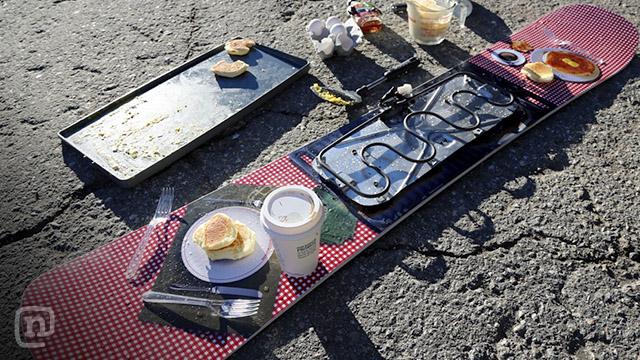
Everyone has their own methods for refueling in the midst of a long day of skiing. Whether it is a pocket snack, stopping at the lodge for a full lunch, or taking a picnic break in the car, it does not matter as long as it gets the job done. Skiing or snowboarding for a full day takes a lot of energy and this energy comes directly from the things that we consume. Like most activities that last a day’s length, it is crucial to eat and snack on a regimented schedule.
Morning
Oftentimes, the best ski days start early in the morning. Sometimes they start so early that it’s hard to find something enjoyable to eat at the time, however, breakfast is the most important meal of the day. According to the Cleveland Clinic, “eating breakfast helps your body perform at its best, which may even help you shed unwanted pounds. The biggest benefit is that you’ll have more energy.” Before a day of skiing or snowboarding, an ideal breakfast would consist of either cereal, milk, fruits, yogurt, cottage cheese, oatmeal, or eggs. Any of these foods, when eaten thoroughly and slowly, can provide for hours of energy without the feeling of being too full. For a pre-skiing breakfast to reach its full potential, is important to give yourself some time to sit down and eat, digest, and head to the mountains without feeling rushed.
Snack Time
After the first few hours of skiing, breakfast energy wears off and it quickly becomes decision-making time. When it is time to snack, creativity is key and there are endless options that can satisfy. For many snacking skiers and snowboarders, the pocket bagel is key. A bagel can be topped with butter, cream cheese, eggs, or meat and still be good several hours later. Other high-energy snacks that are convenient include dried fruit, nuts, energy bars, bananas, apples, or tuna pouches. For some, candy, chips, or crackers work just fine, but at a bare minimum, skiing with $5 can be extremely beneficial in the case that you forgot snacks and need to make a pit stop at the lodge. Come snack time, the main problem that skiers have is storage. This is a simple fix, though, as several coats, backpacks, and even fannypacks, are designed to be lightweight and perfect for carrying these small, personal items.
Lunch Time
On a true first to last chair type of day, eating a big, healthy lunch is almost always a necessity, but with the inflated prices that most ski lodges offer, skiers frequently find themselves wishing they brought their own meal. Packing a lunch may require some extra time in the morning or the night before, but it is definitely worth it. There are a few ergonomic methods for bringing lunch to the ski area. First, skiing with your lunch is always a great idea, as it can be eaten on the lift, sitting on a trail, or even at the top of the park or in the trees. The best way to do this would be to pack a sandwich, wrap, salad, or pasta into a small, lightweight cooler that fits into a backpack and ride with it for the day. Another method, that requires a bit more time and space, is to purchase a grill and bring burgers, chicken, fish, or vegetables to cook in the parking lot. Many ski areas allow grilling in parking lots but have rules that should be closely followed. This is an especially great option for group skiing and can make the day significantly more enjoyable. Packing a lunch and leaving it in a cooler in the car is also a good idea, and allows for a warm, mellow, and comfortable lunch break. Finally, bringing funds for a lodge lunch never fails, but this is an expensive alternative that does not always satisfy cravings.
**WATCH: 3 Pack-and-Go Ski Day Meals

Columbian snowflakes are great.
Think he means “Colombian”